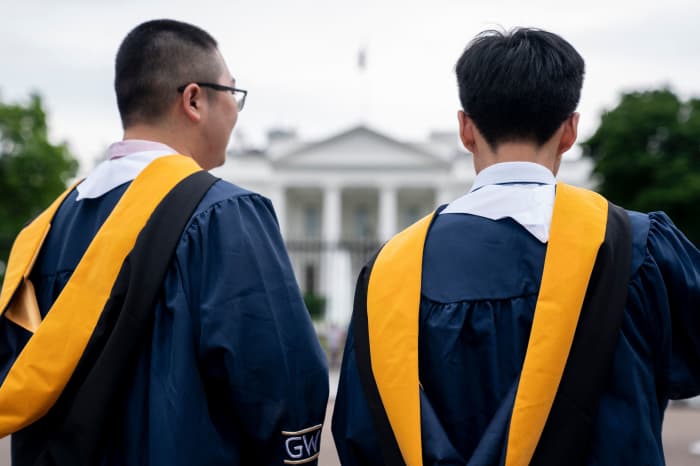There’s signs some people aren’t waiting to receive a federal student-loan bill in October to start paying down their debt.
Yet after a more than three-year pause on interest, payments and collections, the early start isn’t necessarily a sign that borrowers are flush with cash and ready to extinguish their loans.
Department of Education deposits to Treasury Department coffers during the final week of August were blowing past the department’s monthly deposits throughout the pandemic, Bank of America
BAC,
Education Department monthly deposits have averaged $1.2 billion during the last 12 months. August’s deposit surpassed $6 billion, the note said. Deposits were over $600 million each day in the last three days of the month, researchers said.
The operating cash deposits in focus do not solely come from student-loan collections, but researchers said their increase is “the main driver of the uptick in payments in August.”
“Student-loan payments have already begun in earnest,” they wrote.
Goldman Sachs
GS,
The Education Department did not immediately respond to a request for comment.
Why the uptick in payments?
Analysts offered multiple theories on why the payments are coming back before borrowers receive their student-loan bills next month.
The “main explanation” is that “a small share of borrowers” are paying down principal before interest started accruing on balances in September, according to Goldman researchers.
Bank of America researchers say the uptick likely includes payments to beat the start of interest — but loan refinances on larger amounts “by some borrowers seems more likely than a large number of borrowers making a monthly payment, in our view.”
In a refinance, borrowers bring their federal student-loan balances to a private lender, in the hopes of a better interest rate or better repayment terms. The federal sum is paid in full by the private lender.
Borrowers may be able to shave their interest rates through a refinance, but they’ll need to have a solid credit score and steady income, experts say. Refinancers also need to understand they are giving up chances at loan forgiveness and income-driven repayment programs.
There’s approximately 40 million federal student loan borrowers who owe $1.7 trillion in debt. Payments are resuming without mass loan forgiveness after the Supreme Court blocked the Biden administration’s debt cancellation plan.
Whether borrowers are ready to restart payments remains an open question amid signs of trouble for consumers’ wallets. Credit card debt surpassed $1 trillion while delinquency rates for credit cards and car loans are climbing. The number of consumer bankruptcies are bouncing off pandemic lows.
More people would fall behind on their loans without cancellation that carved up to $10,000 and $20,000 off balances, the Biden administration argued. After the Supreme Court decision, President Joe Biden announced a one-year grace period preventing defaults and debt collection referrals for borrowers who are not making payments.
In the wake of the court’s ruling, the President also announced a new repayment plan aimed at making student-loan bills more manageable. Around 4 million people have signed up for the new income-drive repayment plan, called SAVE, that will shield more money from the calculations on monthly payments, administration officials said Tuesday.
‘Little information about the impact of payment restart on borrower behavior’
The people who are either refinancing or making payments ahead of time are probably on solid financial footing already. So there’s a limit on what the ahead-of-schedule payments are showing about student-loan borrowers as a whole.
“If one-off principal payments are behind the recent surge, it provides little information about the impact of payment restart on borrower behavior,” the Goldman note said.
Polls indicate problems ahead. Nearly half of borrowers, 45%, expect they will fall behind on payments, according to an August poll from Credit Karma
INTU,
Seven in ten borrowers said at least some of the money that would have gone to their loans paid for necessities instead, according to a different poll last month from the personal finance website NerdWallet.
“My guess is we are probably seeing some pre-payment behavior,” said student-loan and higher education financing expert Mark Kantrowitz.
He’s skeptical the surveys will foreshadow widespread problems once bills start coming due. “What people say and what people do are two entirely different things,” he said.
Instead, Kantrowitz anticipates a quick wave of confusion and adjustment as people get in a new repayment routine, likely with a different and understaffed loan servicer.
“I’m expecting two, three months of chaos and then things settle down,” he said.







